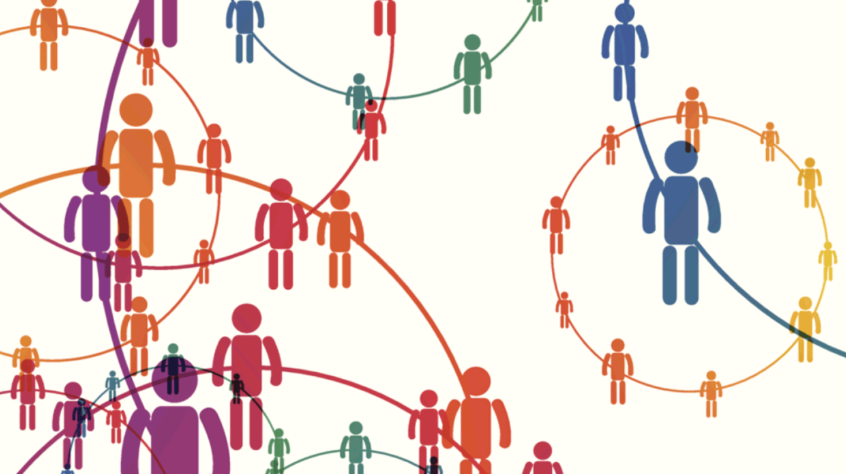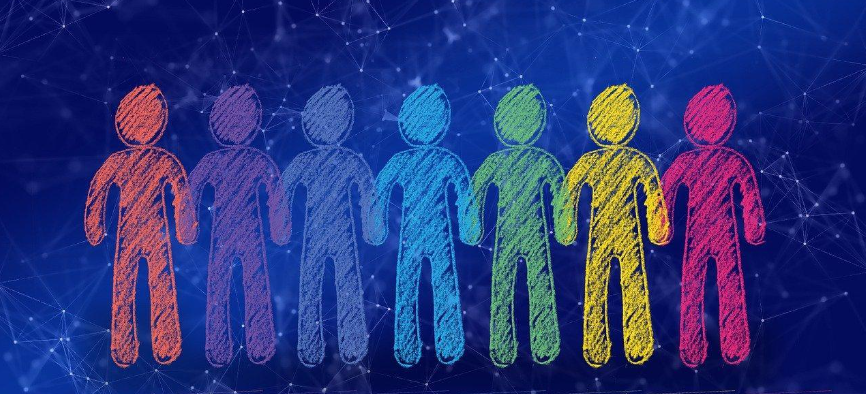WGU D202 OA Study Guide - 2025 | A Dive into the Wonders of Human Recall 📖
Do you ever take several steps into a room to forget why you came there in the first place? Perhaps you have seen a friend’s status and his or her pictures and realized that it is his or her birthday. All of these events are thanks to the amazing memory system found in the brain of human beings. It ranges from remembering events in the world, recalling our past events, planning for the future and even imagining because of memory which is the quiet go-getter in everyone’s life.
This article explores key psychological concepts related to gender development and memory in WGU D202 OA:
- Gender Development Theories: These theories explain how gender identity forms. Social Learning and Social Cognitive Theories emphasize observation and influence, Gender Schema Theory focuses on cognitive frameworks, and Developmental Intergroup Theory examines social categorization.
- Types of Memory: Explicit memory includes semantic (facts) and episodic (events), while implicit memory involves unconscious skills. Prospective memory helps remember future tasks, categorized into time-based (time triggers) and event-based (event triggers).
Knowing what constitutes these types of memories is much more than passing WGU D202 OA or recalling information to tell your friends. It’s about the possibility for every person to amplify the capability of the brain, and use it for bettering the individual, school, and career-life experience. So sit back and enjoy the ride through Hel-lo memory lane – you’ll learn plenty of things here all while having a good old laugh.
How to Use This Guide for the WGU D202 OA Exam?📖
The D202 Human Growth and Development OA exam at WGU evaluates your understanding of gender development, memory types, and cognitive theories. This guide simplifies the key concepts of gender development theories (Social Learning Theory, Social Cognitive Theory, Gender Schema Theory, Developmental Intergroup Theory) and the various types of memory (Explicit memory, Semantic, Episodic, Implicit memory, Prospective memory, Time-Based, Event-Based) to help you grasp the topics tested in the exam.
We also provide exam-style questions and practical applications to ensure you’re fully prepared for the questions on the WGU D202 OA exam.

Understanding Gender Development Theories For D202 OA📝
Gender development is a fascinating and important area to explore, especially for students diving into the WGU D202 module on Human Growth and Development. In this section, we’ll look at four significant theories: Social Learning Theory, Social Cognitive Theory, Gender Schema Theory, and Developmental Intergroup Theory. Each offers unique insights into how gender identity and roles are formed. Let’s break these concepts down step by step.
Social Learning Theory
Suppose you are watching a program you love; a boy is seen playing with a truck, while the girl is playing with a doll. According to Albert Bandura’s Social Learning Theory children learn gender roles through the process of modeling, reinforcement, and punishment.
- Modeling: Children copy what they see. If they see boys playing with trucks then they’re likely to conclude that trucks are for boys only. They pay attention and follow the styles and behavior of people they see on the screen.
- Reinforcement: Positive reinforcement (like praise) encourages certain behaviors. For example, if a boy is told, “Good job fixing the toy truck,” he’s likely to continue similar actions. On the flip side, if he’s teased for playing with a doll, he might avoid that behavior in the future.
- Gender Roles: Over time, these learned behaviors solidify into what society calls “gender roles.” These roles define what’s considered “appropriate” for boys and girls based on cultural norms.
Through observation and feedback, children develop a sense of what is expected of their gender. This process is an essential building block in understanding gender development.
Importance and Usage: This theory highlights the role of observation and reinforcement in learning gender roles. Educators can use this theory to create environments that either reinforce or challenge traditional gender roles. For example, promoting diverse role models can help children explore a broader range of behaviors beyond stereotypical norms.
Social Cognitive Theory
Building on Social Learning Theory, Social Cognitive Theory adds a twist: it emphasizes the contribution that a child himself makes when constructing the gender.
- Self-Regulation: They do not merely ‘copy’; as part of growing up, they learn how to ‘behave appropriately for a boy or a girl’. For example, if a girl wants to wear a dress, she will prefer a dress more than pants not because someone made her do it, but because that is what ‘good’ girls wear.
- Self-Efficacy: This refers to a child’s belief in their ability to succeed in certain activities. A boy confident in his skills at building blocks might pursue activities labeled “boyish” with enthusiasm.
- Attention and Retention: For a child to mimic a behavior, they must first notice it (attention) and remember it (retention). A girl might see her mother cooking and later imitate this action during play.
Importance and Usage: This theory emphasizes cognitive processes in gender development, suggesting that children actively interpret and internalize gendered behaviors. Educators can tailor their teaching methods to support individual exploration of gender identity, fostering a more personalized learning experience.
Gender Schema Theory
Have you ever noticed how kids organize their toys into “for boys” and “for girls” categories? That’s Gender Schema Theory in action, introduced by Sandra Bem. This theory explains how children create mental maps or “schemas” to understand gender.
- Schemas: These are like mental folders. For example, a child’s “Boy” folder might include trucks, blue clothes, and superheroes, while the “Girl” folder might include dolls, pink clothes, and princesses.
- Cognitive Development: Children use these schemas to interpret the world. They’re actively looking for clues from parents, media, and society to decide what fits into each folder.
- Incorporation into Self-Concept: These get incorporated into a child’s developmental models and become a child’s model of him or herself. A girl may find herself rationalizing it like this, ‘Well I have to like pink because I am a girl’, although she may never have been told that in so many words.
Importance and Usage: Applying this theory helps to understand how children construct gender schemas prior to perceiving and acting upon their own and others’ behaviors. Teachers can apply this knowledge and develop lesson plans that face and regress stereotyping of gender nonstandard roles and practices.
Developmental Intergroup Theory
This theory takes a societal view, focusing on how culture and group dynamics influence gender development. It’s like zooming out to see the bigger picture.
- Cultural Emphasis on Gender: From birth, children are surrounded by messages emphasizing gender differences. Think of gender-reveal parties or “boys’ toys” and “girls’ toys” aisles in stores.
- Rigid Stereotypes Formation: Children quickly notice these patterns and form stereotypes. For instance, if boys are often seen as “leaders” in stories, children might assume leadership is a “boys-only” trait.
- Impact of Categorization: These early lessons in categorization can lead to fixed ideas about what boys and girls can or cannot do.
Importance and Usage: This theory addresses how societal emphasis on gender leads to the formation of stereotypes and rigid categories. Educators can create interventions that reduce bias and promote inclusivity, helping students develop a nuanced understanding of gender.
Broader Implications
- Self-Concept Formation: Theories like Social Learning, Social Cognitive, Gender Schema, and Developmental Intergroup collectively show how societal expectations and personal experiences influence a child’s self-concept. Recognizing these dynamics is crucial for fostering positive self-esteem and identity development in children.
- Creating Gender-Neutral Environments: By understanding these theories, educators and parents can create more gender-neutral spaces. For instance, instead of separating toys into “boys” and “girls” sections, they can encourage children to explore all activities, breaking down traditional norms.
- Reducing Stereotypes: Societal emphasis on gender roles can lead to biases that limit opportunities for children. Addressing and challenging stereotypes, whether in classrooms or media, helps create a more inclusive culture where children feel free to express themselves fully.
- Practical Applications in Education: These aspects can be used in gender-equal teaching activities by schools through carrying out discussions on diversity and identity. Other activities such as role play and introduction to gender stereotypes and role models allow children to open their horizons.
- Addressing Gender Inequality: Beyond schools, understanding gender development is vital in addressing gender inequality in broader societal contexts. Policies and practices informed by these theories can contribute to creating equitable opportunities for individuals regardless of gender.
Importance For D202 OA
By exploring these four theories, we can see how children learn about gender from different perspectives: through observation (Social Learning Theory), thinking and choice (Social Cognitive Theory), mental organization (Gender Schema Theory), and societal influence (Developmental Intergroup Theory). Each theory offers valuable insights for students studying WGU D202 and provides a foundation for understanding real-world issues like gender equality and socialization.
Understanding these concepts is not just academic; it’s a step towards creating inclusive environments where everyone can express their identity freely. This knowledge aligns with the goals of the WGU D202 module, helping students prepare for broader societal applications.
Understanding Types of Memory For D202 OA📝
Memory is one of the most fascinating abilities of the human brain. It allows us to store, recall, and even predict information. In this section, we’ll explore the different types of memory: Explicit Memory (Semantic and Episodic), Implicit Memory, and Prospective Memory (Time-Based and Event-Based). Each type plays a unique role in how we navigate and make sense of the world.
Explicit Memory
Explicit memory, also known as declarative memory, involves information that we consciously know and can recall. Think of it as the “facts and events” section of your brain.
Semantic Memory Semantic memory is like your mental encyclopedia. It stores factual information, concepts, and general knowledge about the world. For example, knowing that Paris is the capital of France or that the Earth revolves around the Sun relies on semantic memory. This type of memory is essential for developing our understanding of the world and communicating effectively.
Semantic memory is used every day, from answering trivia questions to understanding the meaning of words and symbols. It’s built through repetition, learning, and exposure to information over time, making it a key resource for academic success and general awareness.
Episodic Memory Episodic memory, on the other hand, is deeply personal. It’s where we store events and experiences from our lives. Imagine flipping through a mental scrapbook; episodic memory holds these snapshots of our lives. Remembering your first day at school, the details of your last birthday, or the feeling of a family vacation are all examples of episodic memory at work.
Episodic memory allows us to reflect on personal history, learn from past experiences, and share meaningful stories. This memory type connects our emotions and senses, which is why certain memories can evoke strong feelings or vivid imagery.
Together, semantic and episodic memories form explicit memory. They work hand in hand to help us learn, recall facts, and build connections between personal experiences and the broader world.
Implicit Memory
Non- declarative memory or, latent memory works in the background more often unconsciously. It is the memory system that deals with all learned behaviors, patterns, and response patterns.
For instance, if you cycle, lace your shoes, or type then you are applying the store of implicit memory. There is no need to ponder what one has to do, or what one has to do next – the actions are quite intuitive. This kind of memory is created through rehearsal and therefore is important when learning new tasks or ways of doing things.
There is an implicit memory that behaves differently from the rest, known as procedural memory, which deals with how an action is done. For instance, after having spent considerable time using a given musical instrument, performing a song is quite natural. Erasing also relies on implicit memory, which is responsible for such emotional learning as when a specific smell brings a feeling of happiness or a definite sound – the feeling of danger.
Implicit memory ensures efficiency in daily tasks, freeing up mental resources for more complex problem-solving or decision-making.
Prospective Memory
Prospective memory is the brain’s system for remembering to perform actions in the future. It’s like setting a mental alarm clock to ensure you don’t forget important tasks or commitments.
Time-Based Prospective Memory Time-based prospective memory involves remembering to do something at a specific time. For example, taking medication at 8 AM or attending a meeting at 3 PM relies on this type of memory. It is particularly important for maintaining schedules and staying punctual.
Event-Based Prospective Memory Event-based prospective memory is triggered by specific events or circumstances. For instance, remembering to pass on a message when you see a friend or turning off the oven when the timer buzzes are examples of this type of memory. Event-based memory helps us adapt to dynamic environments and ensures tasks are completed when prompted by external cues.
Prospective memory plays a critical role in planning and executing future actions, whether they are tied to specific times or triggered by certain events. It ensures that we meet deadlines, fulfill obligations, and manage responsibilities effectively.
Broader Implications of Memory Types
Understanding these memory types has profound implications for learning, daily functioning, and professional life.
In Education:
- Semantic memory supports the retention of factual knowledge and academic learning.
- Episodic memory enhances understanding by connecting new information to personal experiences.
- Implicit memory aids in mastering skills like handwriting or solving mathematical problems through repetition and practice.
- Prospective memory ensures students meet deadlines, attend classes, and manage assignments effectively.
In Daily Life:
- Implicit memory allows us to perform routine tasks effortlessly, like driving or cooking.
- Prospective memory helps us stay organized, remembering appointments, errands, and commitments.
- Episodic memory preserves our personal history, strengthening relationships by sharing meaningful stories.
In Professional Settings:
- Semantic memory underpins expertise and problem-solving capabilities.
- Implicit memory improves efficiency in skill-based tasks, such as operating machinery or performing technical procedures.
- Prospective memory fosters reliability, ensuring timely task completion and adherence to schedules.
By applying these insights, we can enhance productivity, improve learning strategies, and maintain better personal and professional organization.
Importance For D202 OA
Memory is not just a single ability but a complex and interconnected system. From the facts we learn (explicit memory) to the habits we form (implicit memory) and the plans we make (prospective memory), each type plays a crucial role in shaping our daily lives.
By understanding these memory types in depth, students in the WGU D202 module can appreciate how memory influences everything from personal growth to academic achievement and professional success. This knowledge aligns with the goals of the WGU D202 OA module, providing valuable tools for real-world applications.
Tired of reading blog articles?
Let’s Watch Our Free WGU D202 Practice Questions Video Below!

Wrapping Up: Your Path to Memory Mastery for WGU D202📖
Memory is an extraordinary tool, and understanding its types—explicit, implicit, and perspective—can transform how you learn, work, and navigate everyday life. By diving deep into concepts like semantic and episodic memory, appreciating the power of implicit memory, and leveraging prospective memory to plan your future, you’ve gained insights that are not just academic but life-enhancing.
As you prepare for the WGU D202 OA, remember that these topics are more than just exam material. They’re the building blocks for understanding how your mind works and for applying this knowledge in meaningful ways. Take the time to grasp these concepts, reflect on how they connect to your experiences, and don’t hesitate to revisit the content if needed.
Good luck on your WGU D202 journey and the final OA! With the knowledge you’ve gained, you’re well on your way to acing it and applying these insights to make the most of your incredible memory system.






